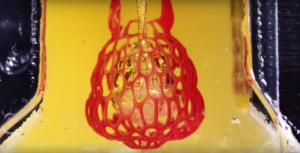I just fulfilled a childhood dream: I made a videogame. OK, it’s barely a game. It’s not challenging—you can complete it in a few minutes, and the one-bit graphics make old Atari games look sophisticated by comparison. But I made a game.
If I’d been more industrious in my youth, I could have made some sort of Zork-style text adventure game in the Basic programming language. But it would have been tedious work, at least with the tools I had access to at the time. More recently, I could have used one of the various point-and-click game-making tools on the market, such as GameMaker Studio or RPG Maker. But they’re a little daunting, and they cost money.
Making a videogame remained a bucket list item until I stumbled on an incredibly simple open source web app called Bitsy. I started playing around with it, just to see how it worked. Before I knew it, I had something playable. I made my game in a couple of hours.
An image from House of the Living, a Bitsy game by Fred Bednarski.
Screenshot: Klint Finley via Fred BednarskiBitsy is designed for making little pixel-art games where you walk around and talk to people. You can use it in your browser without downloading anything. You draw the graphics on an 8 x 8 grid. Despite, or rather because of, its simplicity, the platform is enticing. “The lo-fi aesthetic was a big selling point,” says Fred Bednarski, designer of the Bitsy games House of the Living and The World Has Been Sad Since Tuesday. “I thought that I could make some 8 x 8 sprites look decent.”
Seattle-based software developer Adam Le Doux created Bitsy for himself. “I was trying to work on this other game project that I was blocked on,” Le Doux says. “I was spending a lot of time on complex systems like skeleton animation systems. I was procrastinating.” So Le Doux created a simple engine designed to keep him focused on his core interest: “walking around and talking to people and exploring a space.”
“I grew up playing Game Boy games and wanted something like Pokémon games, where the townfolk tell you rumors,” he says. The Zelda family of games was another big influence, as was the 2013 videogame Gone Home.
The original version of Bitsy didn’t have a graphical interface: Le Doux just edited text files to create graphics. But after he showed his early work to his wife, she wanted to use the tool too. “The original interface was meant with her as the primary user,” he says.



